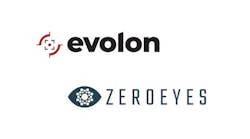ZeroEyes plants ‘self-serve’ gun-detection flag in residential, SMB market
ZeroEyes, the prominent maker of AI-based gun detection video analytics, is making its technology available to smaller clients, including residential customers and small and medium-sized businesses without large camera networks.
The company announced the creation of ZeroEyes One for deployments at businesses or homes ranging from 1-16 IP cameras.
The program is aimed at providing protection for smaller businesses such as convenience stores, gas stations, retail stores, bars, restaurants, pharmacies, parks and splash pads, religious organizations, daycares and banks. Private residents can also deploy the technology on their existing digital IP cameras.
ZeroEyes Co-Founder and Chief Revenue Officer Sam Alaimo says the ZEO program works the same as its traditional program does with the same software. Customers who want smaller camera counts can buy the equipment from the website, but larger requests will require contact with a salesperson.
They will then receive ZeroEyes’ hardware by mail, along with installation instructions and video materials to complete the setup. ZeroEyes will verify the deployment to confirm the setup is complete and functioning correctly. Organizations and individuals can purchase one, three, or five-year ZEO subscriptions for 1-16 digital IP cameras.
“When we had the ability to do lower camera volume deals with a convenience store or a gas station or an outlet for a major chain, it raised the question, ‘Why wouldn’t we be willing to do the same thing for individuals with the similar quality IP cameras?’ And it just made sense,” Alaimo says. “We’ve had a couple of people ask us over the years if we’d be able to work on their personal property. At the time we couldn’t, but now this program opens the door for that.”
Alaimo says he didn’t have figures available on how big the market will be for smaller clients, “but I think it’s going to be bigger than we initially thought,” he notes. “We initially did this primarily for the commercial value for the small schools and small businesses and realized that as an add-on since we were being asked about it for private residences.
“Given who we’ve talked to recently, I think that’s going to be a larger stream than we thought. I’m surprised how many people have IP cameras in their houses, but that’s a common thing nowadays.”
Theft and violent crime has become a major issue for businesses across the U.S., including gas stations and convenience stores and smaller retail establishments that may not have the resources to implement high-tech solutions.
Bars and dance halls have been the site of mass shootings in recent years, and with antisemitism on the rise many churches and religious organizations are concerned about potential threats.
Data from the U.S. Bureau of Labor Statistics shows 524 workers were killed in gun-related incidents in 2022.
While the primary concern is protecting human lives, business leaders must also consider broader implications, including loss of customers, property and reputation damage, increased insurance costs, and staff retention issues, ZeroEyes points out in its Thursday announcement.
The financial costs of gun-related violence are substantial and challenging to quantify, with estimates ranging from $229 billion to $557 billion per year.
If ZEO identifies a gun at any time, images are shared with the ZeroEyes Operations Center, which is staffed by military and law enforcement veterans. If they determine the threat is valid, they dispatch alerts and actionable intelligence — including visual description, gun type and last known location — to local law enforcement and a chosen customer contact as quickly as 3 to 5 seconds from detection.
“Through the ZeroEyes Research Center, we have discovered that gun violence is often unpredictable and can strike anyone, anywhere, at any time,” says Mike Lahiff, CEO and Co-Founder of ZeroEyes.
“Leveraging the same technology that protects K-12 schools, colleges, hospitals, military bases, and large businesses around the country, ZEO now empowers smaller organizations and even people in their own homes to significantly enhance their security and keep themselves or their patrons and employees safe from gun-related violence.”
Alaimo says many of the company’s clients are “amazed” when they implement the company’s software how many guns they find on their premises that are not fired that they still want to know about.
“Schools typically know about the gun that's shot. We also find the guns that are not shot, that are pulled out in the hallway, that are pulled out in the parking lot, that are pulled out the loading dock, and we send that alert so they can keep people safer, apprehend the individual, make sure they never do it again,” he says.
“I think in the house environment it could be similar. If there's someone outside with a gun, the security camera is not going to let anybody know that, but our software will say ‘Listen, you’re going to get an alert within three to five seconds that somebody is outside with an assault rifle or a semi-automatic pistol or a shotgun, you probably want to check it out. So it's going to make it proactive, not reactive.’”




